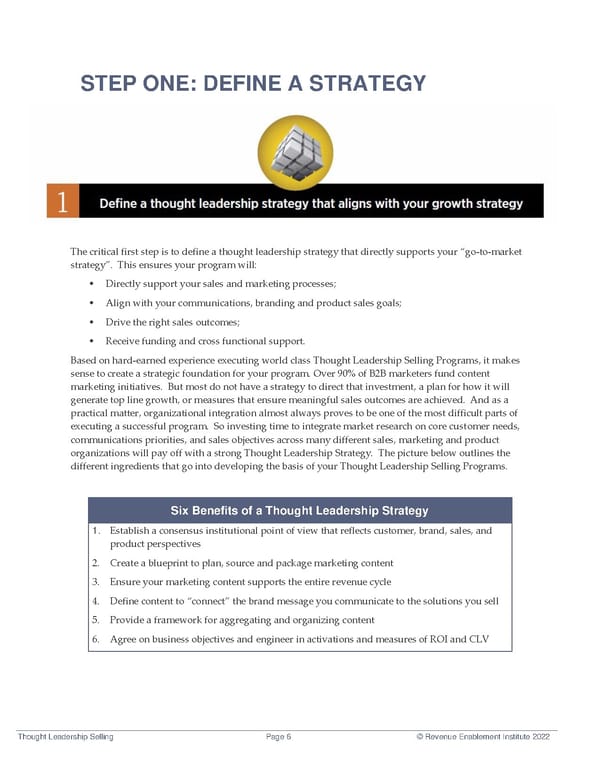STEP ONE: DEFINE A STRATEGY The critical first step is to define a thought leadership strategy that directly supports your “go-to-market strategy”. This ensures your program will: • Directly support your sales and marketing processes; • Align with your communications, branding and product sales goals; • Drive the right sales outcomes; • Receive funding and cross functional support. Based on hard-earned experience executing world class Thought Leadership Selling Programs, it makes sense to create a strategic foundation for your program. Over 90% of B2B marketers fund content marketing initiatives. But most do not have a strategy to direct that investment, a plan for how it will generate top line growth, or measures that ensure meaningful sales outcomes are achieved. And as a practical matter, organizational integration almost always proves to be one of the most difficult parts of executing a successful program. So investing time to integrate market research on core customer needs, communications priorities, and sales objectives across many different sales, marketing and product organizations will pay off with a strong Thought Leadership Strategy. The picture below outlines the different ingredients that go into developing the basis of your Thought Leadership Selling Programs. Six Benefits of a Thought Leadership Strategy 1. Establish a consensus institutional point of view that reflects customer, brand, sales, and product perspectives 2. Create a blueprint to plan, source and package marketing content 3. Ensure your marketing content supports the entire revenue cycle 4. Define content to “connect” the brand message you communicate to the solutions you sell 5. Provide a framework for aggregating and organizing content 6. Agree on business objectives and engineer in activations and measures of ROI and CLV Thought Leadership Selling Page 6 © Revenue Enablement Institute 2022
 Thought Leadership Selling Flipbook Page 5 Page 7
Thought Leadership Selling Flipbook Page 5 Page 7